
Concept explainers
(a)
Interpretation:
Constitutional isomers that has molecular formula
Concept Introduction:
Halogenation reaction is the one where atom or atoms of halogens get substituted in a carbon chain. Halogenation is a type of substitution reaction.
In
IUPAC rules for naming alkanes:
There are about five rules that has to be followed for naming an alkane and they are,
- The longest continuous carbon chain in the compound has to be identified. This is known as parent compound. From this the parent name is obtained. Suffix “–ane” (for alkane) is added at the end of the prefix which gives information about the number of carbon atoms.
- Numbering has to be done so that the lowest number is given to the first group that is encountered in the parent chain.
- Naming and numbering has to be given for each atom or group that is attached to the parent chain. Numbering has to be done in a way that substituents get the least numbering.
- If the same substitution is present in the parent chain more than once, a separate prefix is added which tells about the number of times the substituent occurs. Prefixes used are di-, tri-, tetra-, penta- etc.
- Name of the substituents has to be placed in an alphabetical order before the parent compound name.
(a)
Explanation of Solution
Given molecular formula of constitutional isomer is
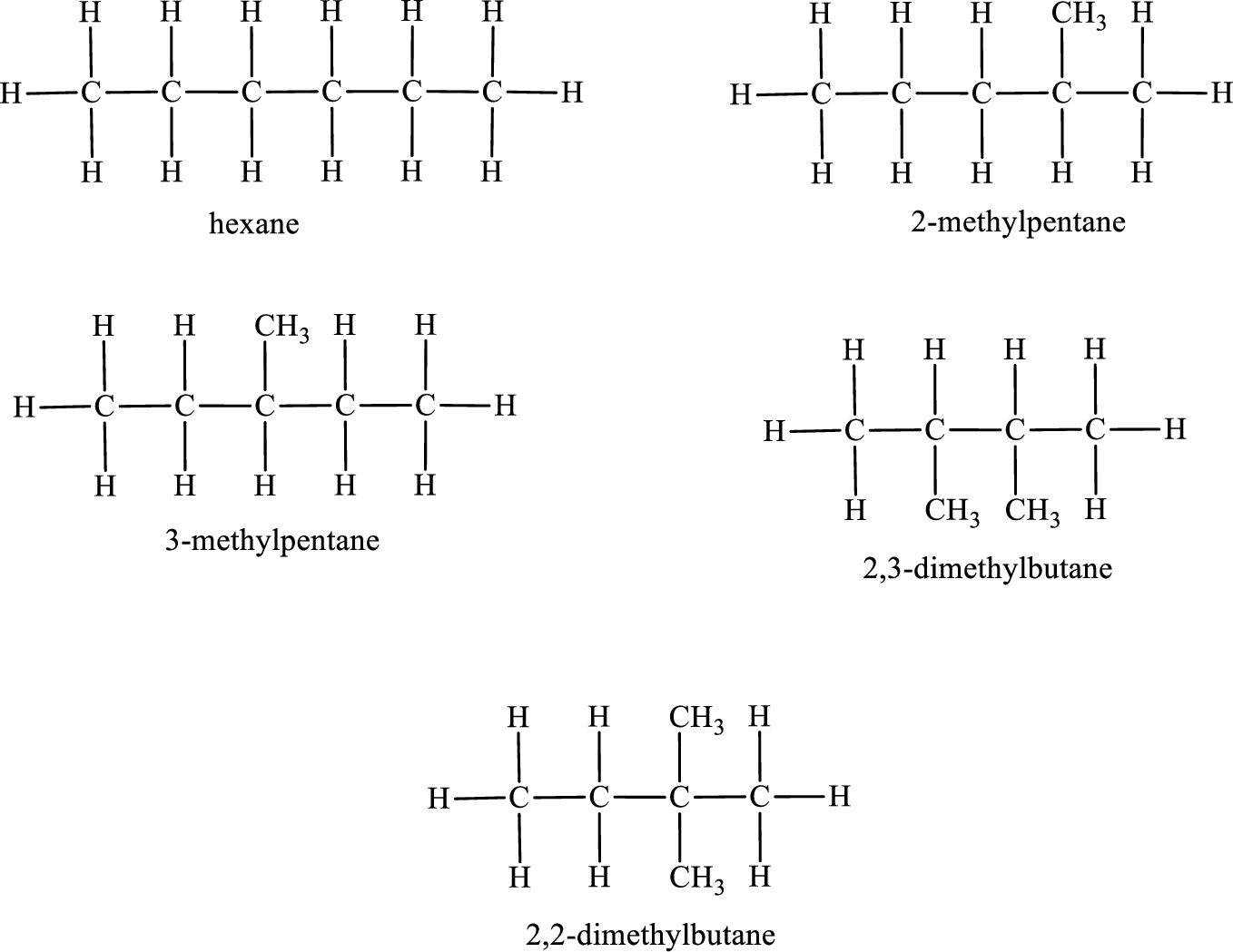
Among the constitutional isomers, the one that gives only two monobromo derivatives can be identified by looking into the structure that contain carbon atoms that has only two different environment. The structure is found to be 2,3-dimethylbutane.
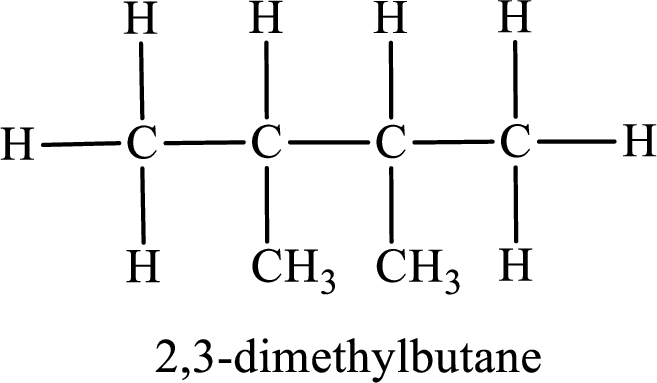
The reaction can be given as,
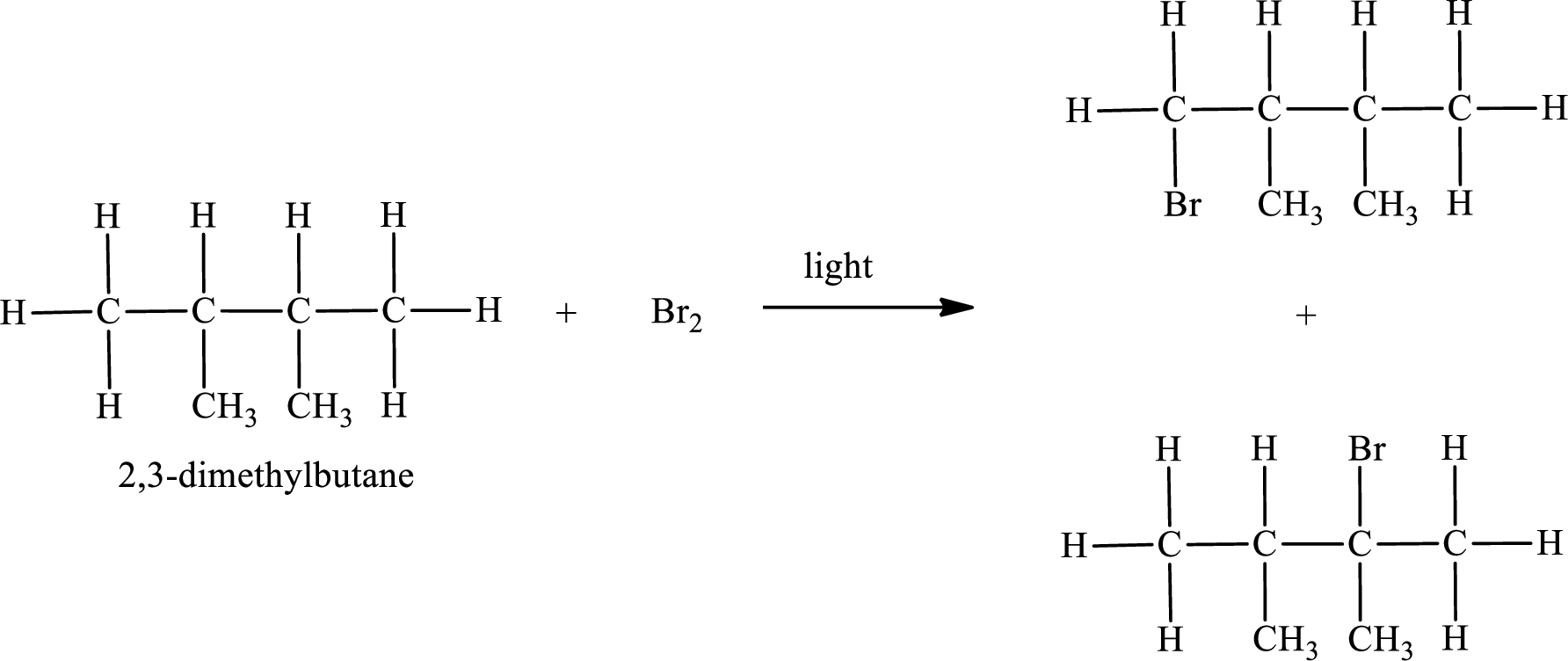
IUPAC names:
First monobromo derivative:
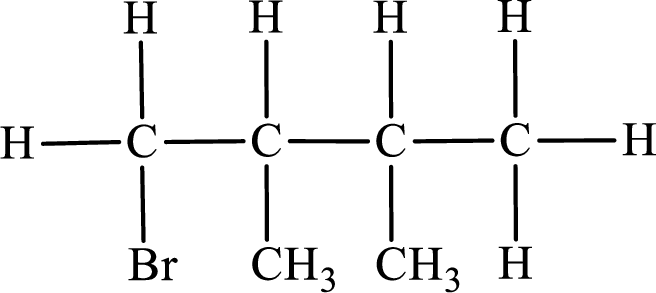
In the given compound, the longest carbon chain is found to contain four carbon atoms. Therefore, the parent alkane name is butane.
Numbering of carbon atoms has to be done in a way that the substituents present in the longest carbon chain get the least numbering.
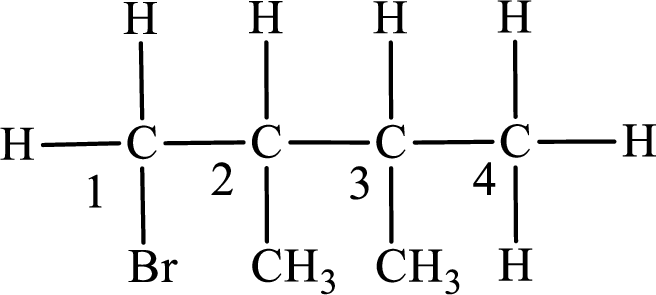
The substituent present in the given compound are a bromine atom and two methyl groups. Number has to be added before the substituent indicating the carbon in which it is attached. Therefore, IUPAC name is obtained as,
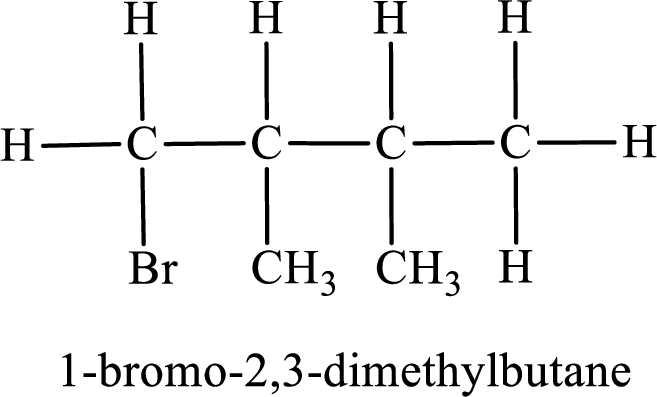
Parent chain is butane and the substituent present is 1-bromo-2,3-dimethyl. Hence, the IUPAC name is given as 1-bromo-2,3-dimethylbutane.
Second monobromo derivative:
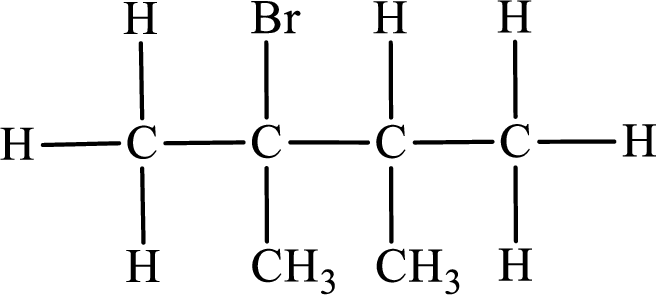
In the given compound, the longest carbon chain is found to contain four carbon atoms. Therefore, the parent alkane name is butane.
Numbering of carbon atoms has to be done in a way that the substituents present in the longest carbon chain get the least numbering.
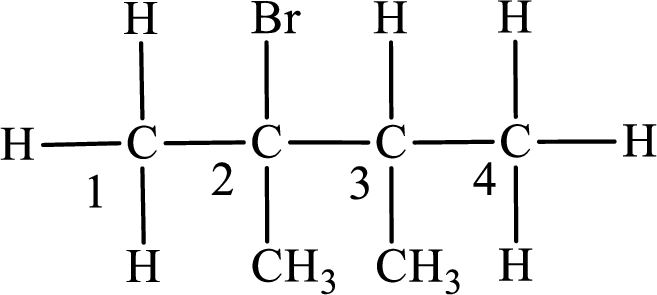
The substituent present in the given compound are a bromine atom and two methyl groups. Number has to be added before the substituent indicating the carbon in which it is attached. Therefore, IUPAC name is obtained as,
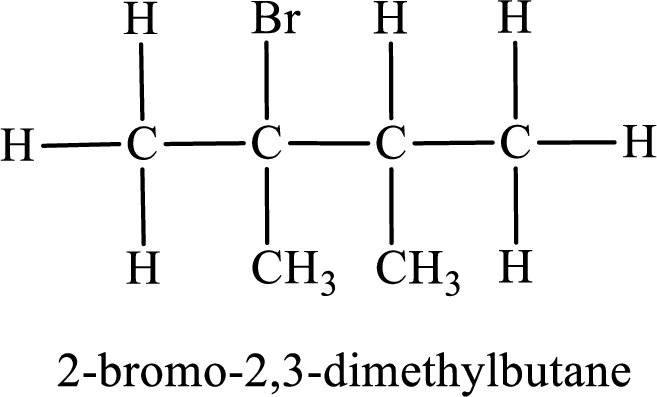
Parent chain is butane and the substituent present is 2-bromo-2,3-dimethyl. Hence, the IUPAC name is given as 2-bromo-2,3-dimethylbutane.
(b)
Interpretation:
Constitutional isomers that has molecular formula
Concept Introduction:
Refer part (a).
(b)
Explanation of Solution
Given molecular formula of constitutional isomer is
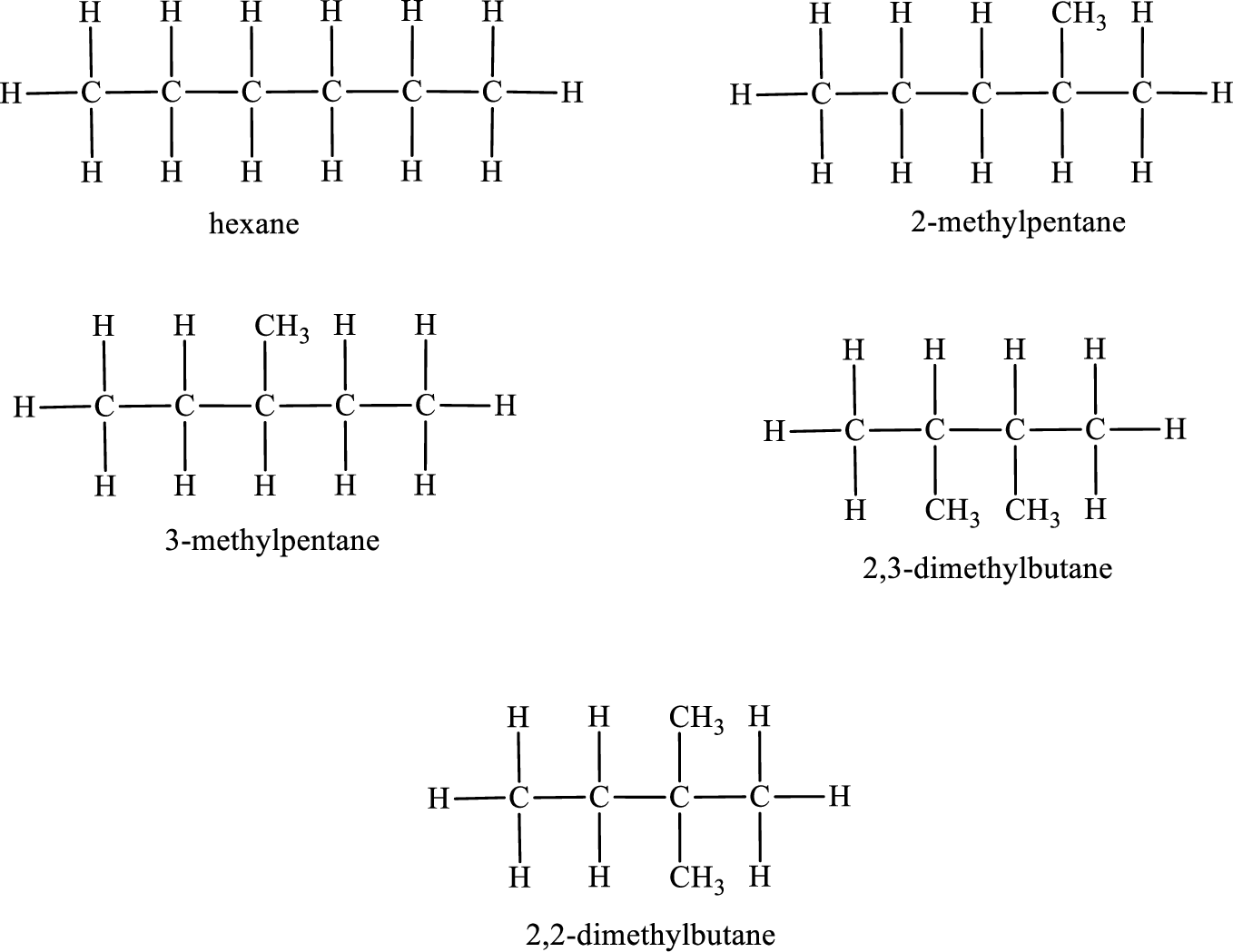
Among the constitutional isomers, the one that gives only three monobromo derivatives can be identified by looking into the structure that contain carbon atoms that has only three different environment. The structure is found to be hexane.
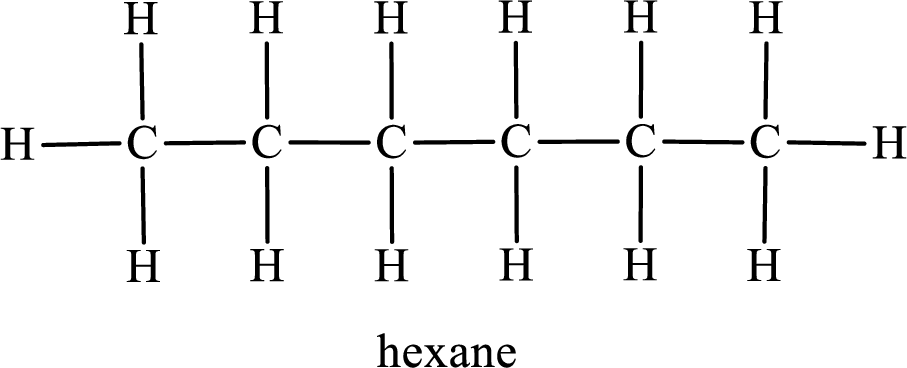
The reaction can be given as,
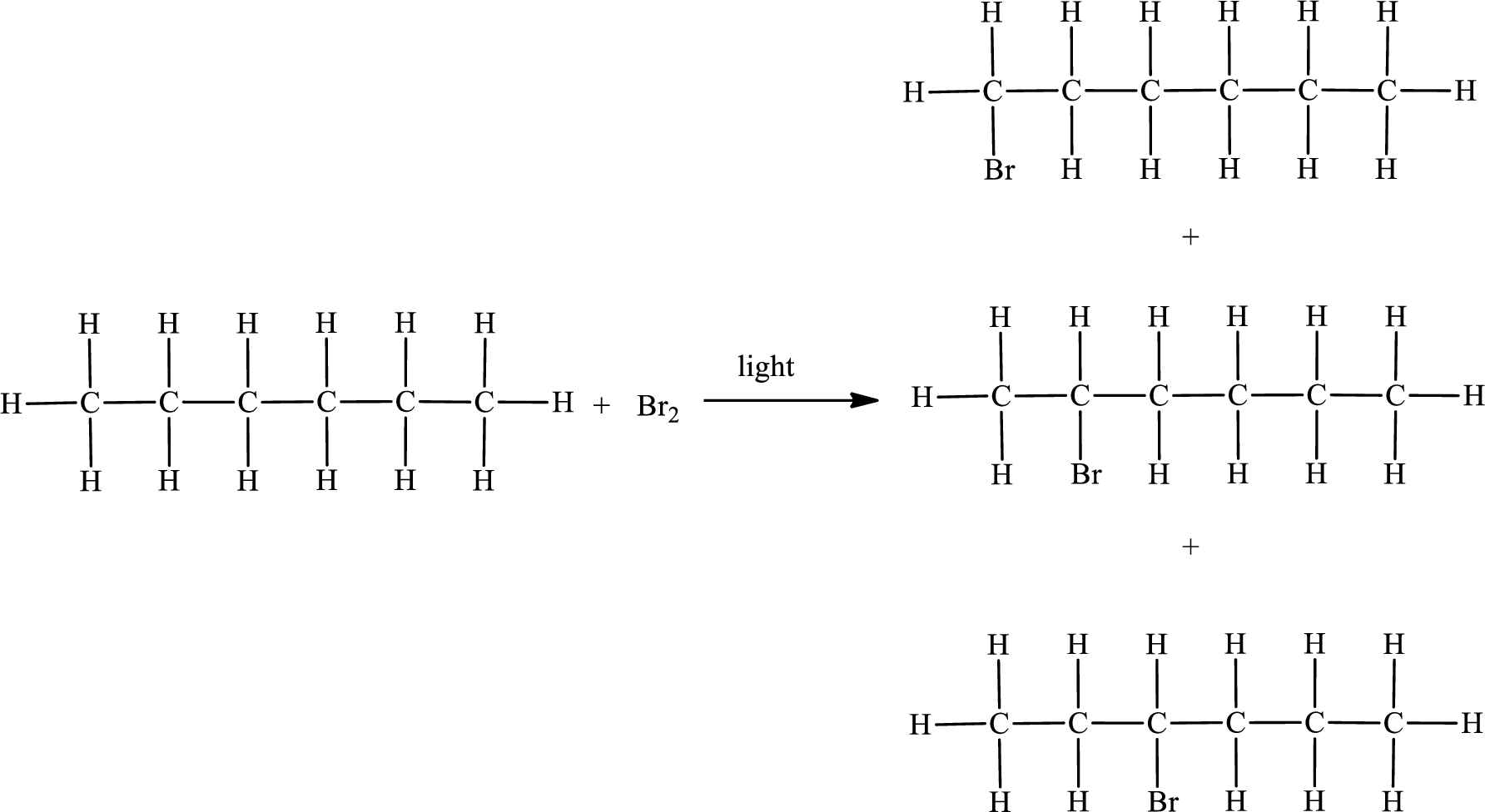
IUPAC names:
First monobromo derivative:

In the given compound, the longest carbon chain is found to contain six carbon atoms. Therefore, the parent alkane name is hexane.
Numbering of carbon atoms has to be done in a way that the substituents present in the longest carbon chain get the least numbering.

The substituent present in the given compound is a bromine atom. Number has to be added before the substituent indicating the carbon in which it is attached. Therefore, IUPAC name is obtained as,
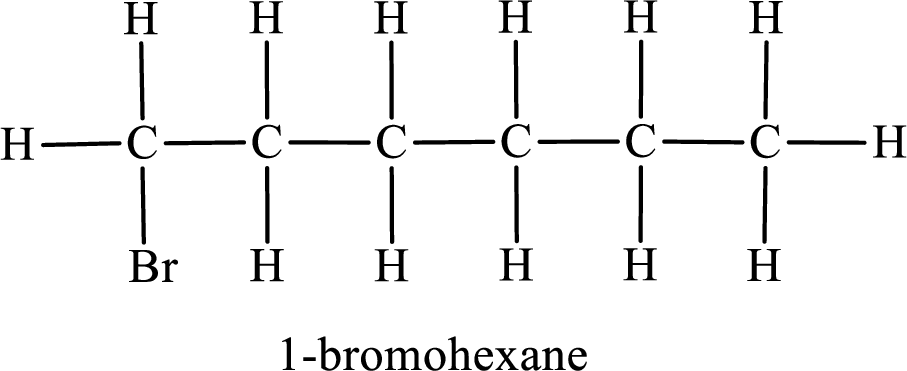
Parent chain is hexane and the substituent present is 1-bromo. Hence, the IUPAC name is given as 1-bromohexane.
Second monobromo derivative:

In the given compound, the longest carbon chain is found to contain six carbon atoms. Therefore, the parent alkane name is hexane.
Numbering of carbon atoms has to be done in a way that the substituents present in the longest carbon chain get the least numbering.

The substituent present in the given compound is a bromine atom. Number has to be added before the substituent indicating the carbon in which it is attached. Therefore, IUPAC name is obtained as,

Parent chain is hexane and the substituent present is 2-bromo. Hence, the IUPAC name is given as 2-bromohexane.
Third monobromo derivative:

In the given compound, the longest carbon chain is found to contain six carbon atoms. Therefore, the parent alkane name is hexane.
Numbering of carbon atoms has to be done in a way that the substituents present in the longest carbon chain get the least numbering.

The substituent present in the given compound is a bromine atom. Number has to be added before the substituent indicating the carbon in which it is attached. Therefore, IUPAC name is obtained as,
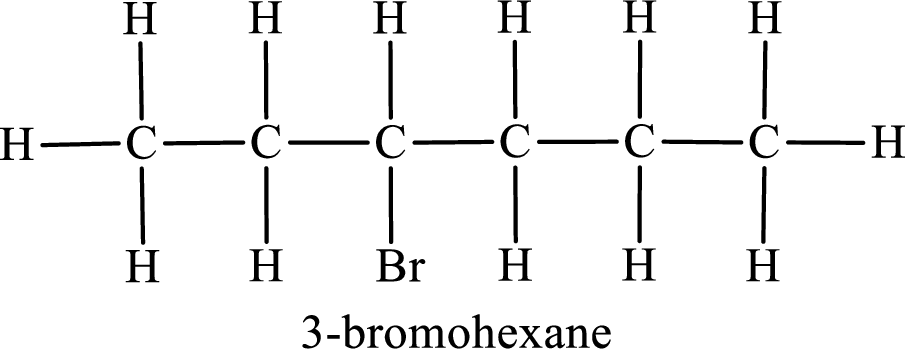
Parent chain is hexane and the substituent present is 3-bromo. Hence, the IUPAC name is given as 3-bromohexane.
(c)
Interpretation:
Constitutional isomers that has molecular formula
Concept Introduction:
Refer part (a).
(c)
Explanation of Solution
Given molecular formula of constitutional isomer is
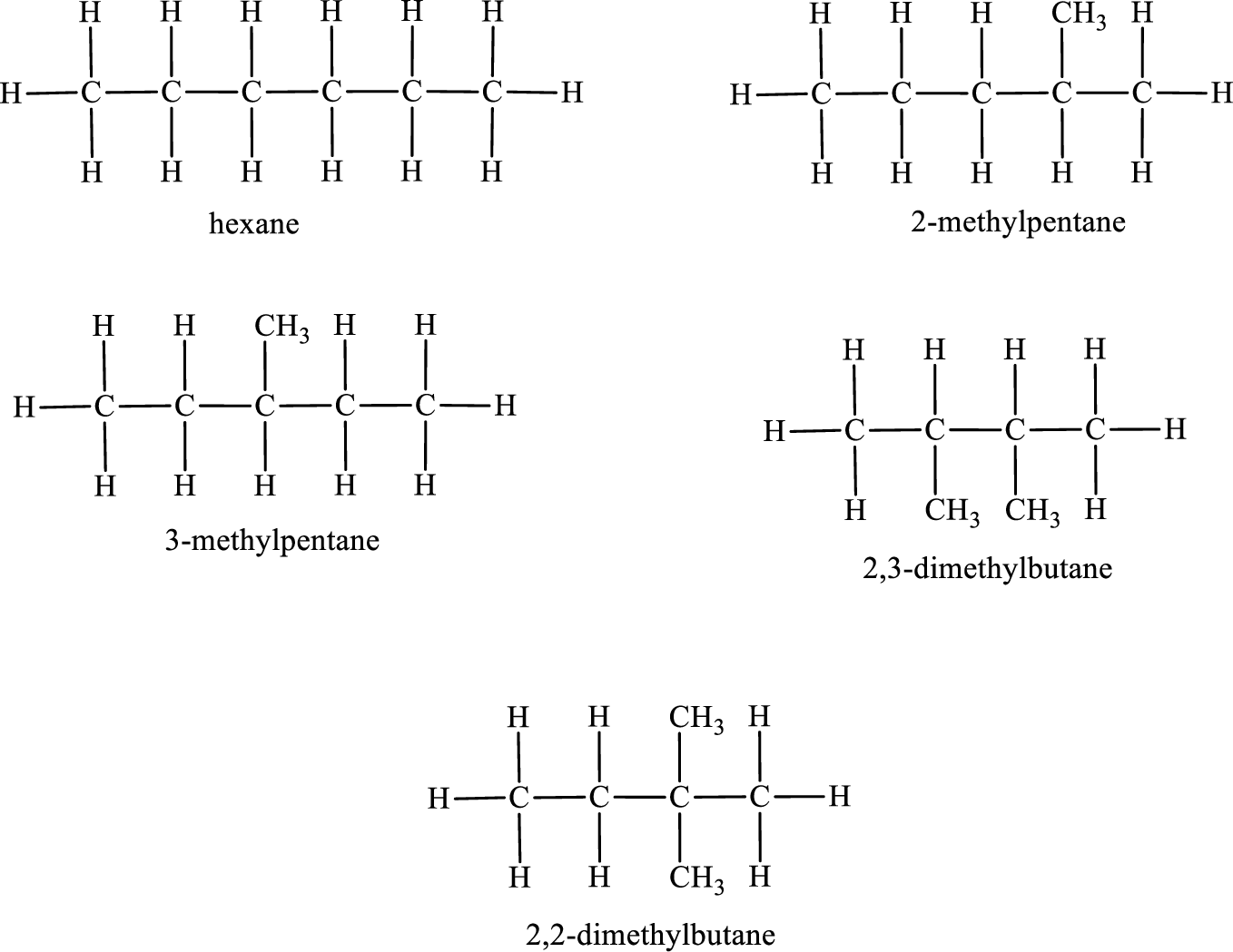
Among the constitutional isomers, the one that gives only four monobromo derivatives can be identified by looking into the structure that contain carbon atoms that has only four different environment. The structure is found to be 3-methylpentane.
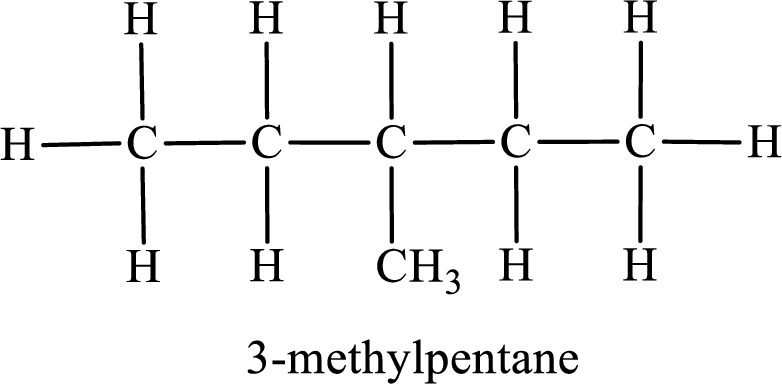
The reaction can be given as,
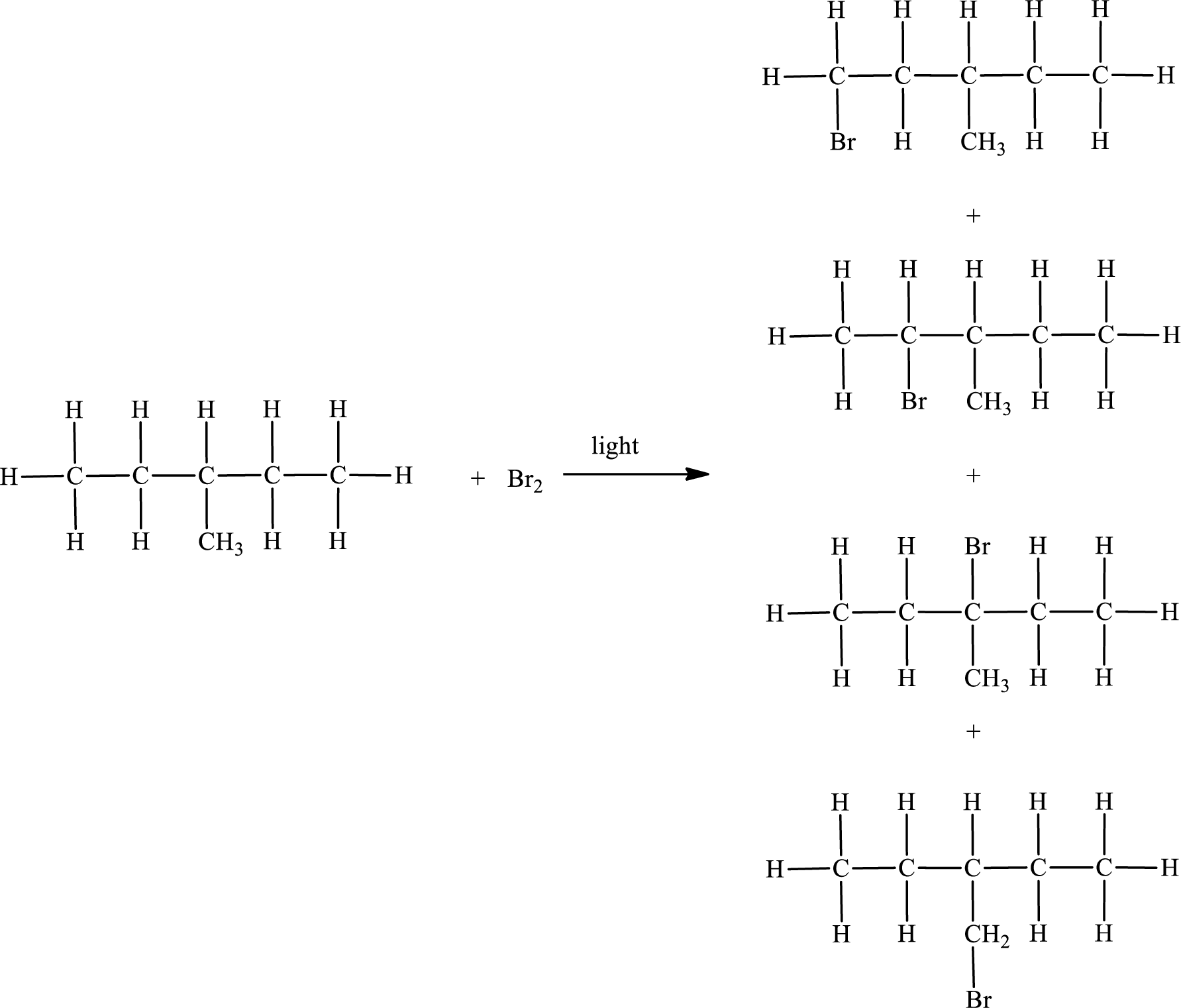
IUPAC names:
First monobromo derivative:
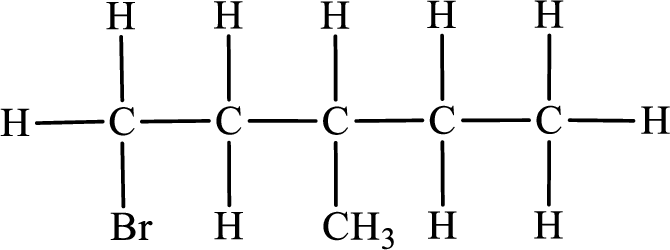
In the given compound, the longest carbon chain is found to contain five carbon atoms. Therefore, the parent alkane name is pentane.
Numbering of carbon atoms has to be done in a way that the substituents present in the longest carbon chain get the least numbering.
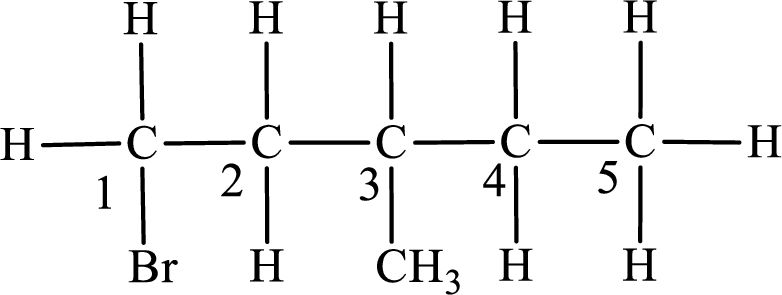
The substituent present in the given compound are a bromine atom and a methyl group. Number has to be added before the substituent indicating the carbon in which it is attached. Therefore, IUPAC name is obtained as,
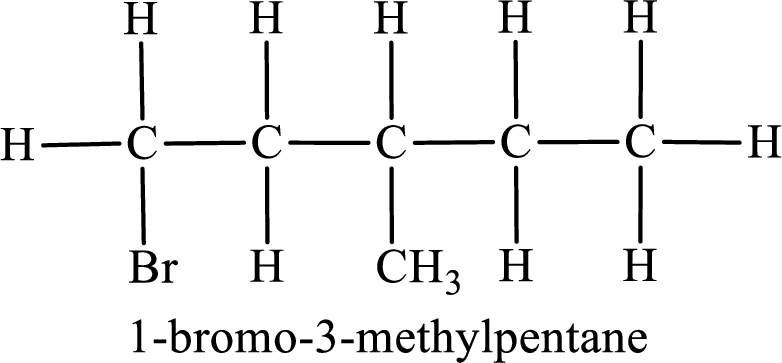
Parent chain is pentane and the substituent present is 1-bromo-3-methyl. Hence, the IUPAC name is given as 1-bromo-3-methylpentane.
Second monobromo derivative:
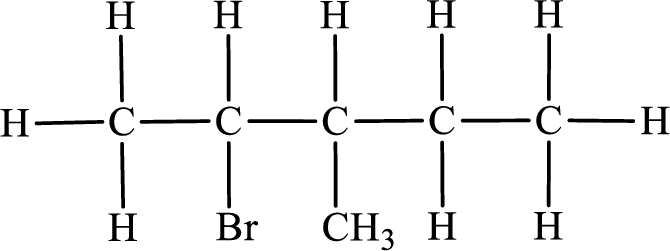
In the given compound, the longest carbon chain is found to contain five carbon atoms. Therefore, the parent alkane name is pentane.
Numbering of carbon atoms has to be done in a way that the substituents present in the longest carbon chain get the least numbering.
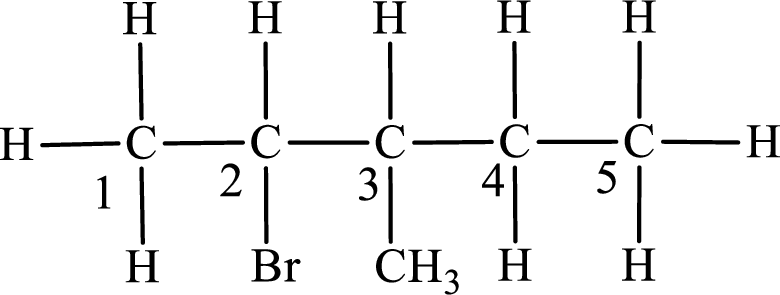
The substituent present in the given compound are a bromine atom and a methyl group. Number has to be added before the substituent indicating the carbon in which it is attached. Therefore, IUPAC name is obtained as,
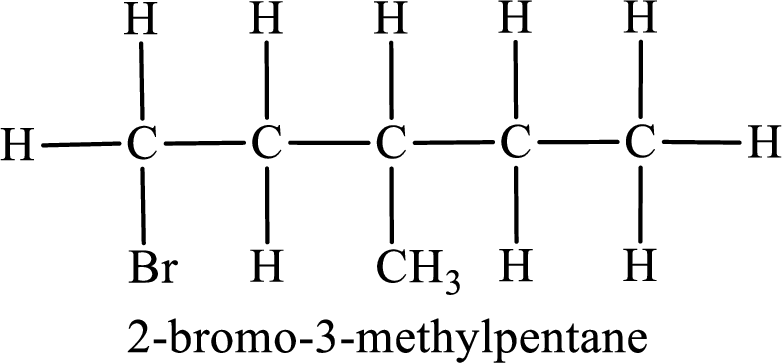
Parent chain is pentane and the substituent present is 2-bromo-3-methyl. Hence, the IUPAC name is given as 2-bromo-3-methylpentane.
Third monobromo derivative:
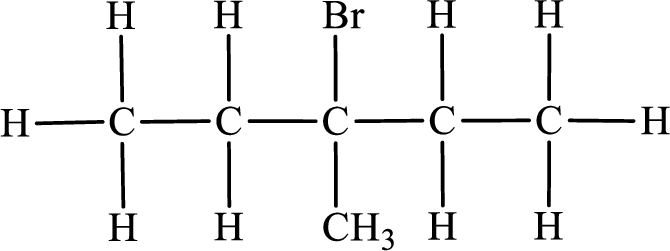
In the given compound, the longest carbon chain is found to contain five carbon atoms. Therefore, the parent alkane name is pentane.
Numbering of carbon atoms has to be done in a way that the substituents present in the longest carbon chain get the least numbering.
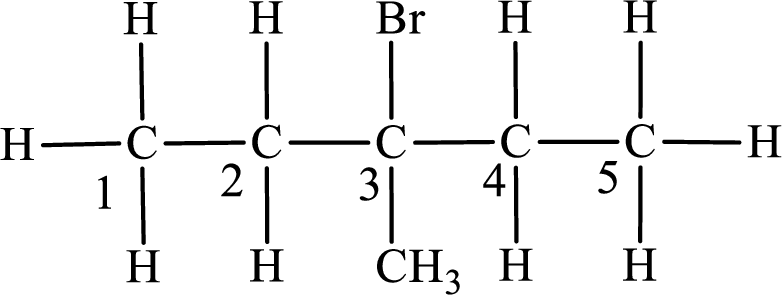
The substituent present in the given compound are a bromine atom and a methyl group. Number has to be added before the substituent indicating the carbon in which it is attached. Therefore, IUPAC name is obtained as,
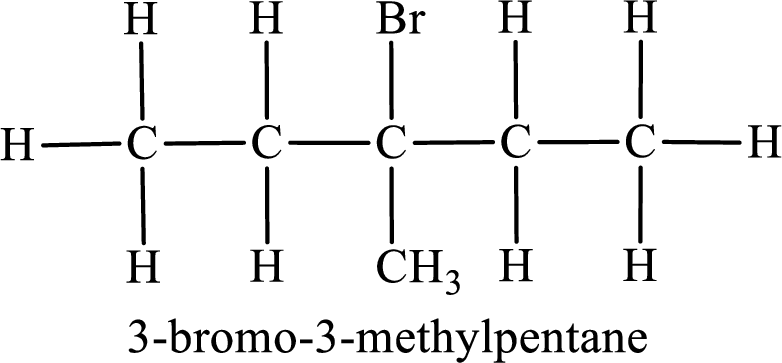
Parent chain is pentane and the substituent present is 3-bromo-3-methyl. Hence, the IUPAC name is given as 3-bromo-3-methylpentane.
Fourth monobromo derivative:
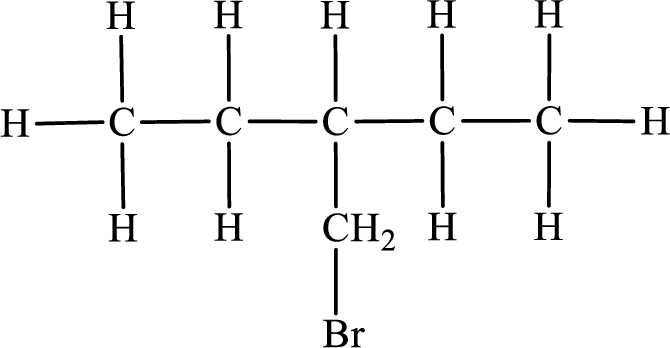
In the given compound, the longest carbon chain is found to contain five carbon atoms. Therefore, the parent alkane name is pentane.
Numbering of carbon atoms has to be done in a way that the substituents present in the longest carbon chain get the least numbering.
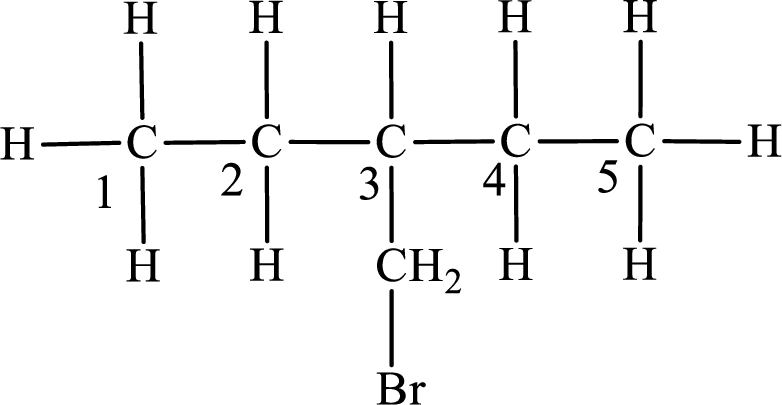
The substituent present in the given compound is a bromomethyl group. Number has to be added before the substituent indicating the carbon in which it is attached. Therefore, IUPAC name is obtained as,
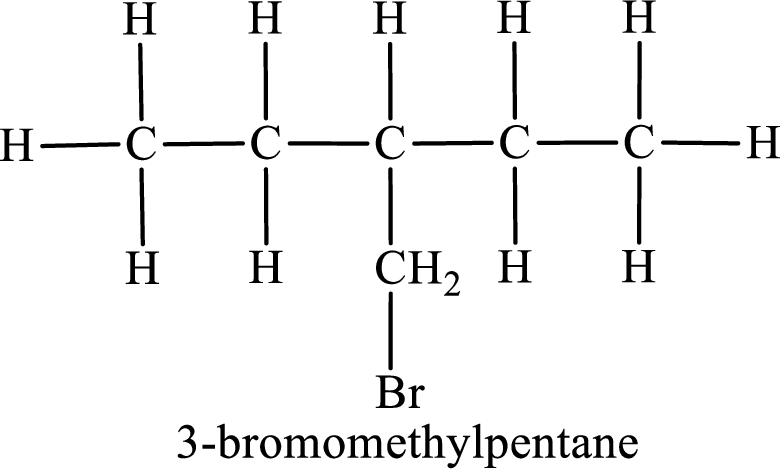
Parent chain is pentane and the substituent present is 3-bromomethyl. Hence, the IUPAC name is given as 3-bromomethylpentane.
Want to see more full solutions like this?
Chapter 10 Solutions
GENERAL,ORGANIC,+BIOCHEMISTRY(LL)-PKG
- 19) Which metal is most commonly used in galvanization to protect steel structures from oxidation? Lead a. b. Tin C. Nickel d. Zinc 20) The following molecule is an example of a: R₁ R2- -N-R3 a. Secondary amine b. Secondary amide c. Tertiary amine d. Tertiary amidearrow_forwardpls helparrow_forwardIndicate the product of the reaction OH OH CH3-CC- Ph + H2SO4 a 20°C | CH3 Pharrow_forward
- 35) Complete the following equation by drawing the line the structure of the products that are formed. Please note that in some cases more than one product is possible. You must draw all possible products to recive full marks! a. ethanol + 2-propanol + H2SO4 → b. OH conc. H2SO4 CH2 H3C CH + K2Cr2O7 C. d. H3C A pressure CH3 + H2 CH Pt catalystarrow_forward21) The rate of reaction depends upon: a. the concentration and nature of reactants b. the temperature of the reaction C. whether or not a catalyst was used d. all of the above 22) A Maxwell-Boltzmann curve shows the distribution of molecular energies in a reaction system. When the temperature in this system is increased, the peak is a. higher and further to the right. b. higher and further to the left. c. lower and further to the right. d. lower and further to the left. 23) Which of the following correctly describes the reaction represented by the reaction below? CaCO3 (s) + energy → CaO (s) + CO2 (g) a. It is exothermic and the potential energy is greater in the reactants than the products. b. c. It is exothermic and the potential energy is greater in the products than the reactants. It is endothermic and the potential energy is greater in the products than the reactants. d. It is endothermic and the potential energy is equal for the products and reactants.arrow_forwardpls helparrow_forward
- 27) Draw the energy level diagram and write the full and shorthand electron configuration for a neutral sulfur atom.arrow_forwardIndicate whether these compounds are isomers, enantiomers, or tautomers. OCH OCH محمد ممدarrow_forward30) Substance A to E below are listed with several of their properties. The identities of the substances are identified in random order below: Iron, ethane, ethanol, sodium nitrate, graphite First classify each substance as either a polar covalent compound, non-polar covalent compound, ionic compound, metallic solid, or network solid. Write your predictions in the sixth coloumn of the chart, under "type of substance." Then, identify the identity of the substance in the last coloumn. Substance Melting Point Boiling Point Solubility in H₂O Electrical Conductivity Type of Substance Identity of Substance (°C) (°C) as: Solid, Liquids, Solution A -182 -88 Insoluble No/No/- B 1538 2862 Insoluble Yes/Yes/- C 308 380 Soluble Yes/Yes/Yes Ꭰ 3456 Insoluble No/-/- E -114 78 Soluble No/No/Noarrow_forward
 ChemistryChemistryISBN:9781305957404Author:Steven S. Zumdahl, Susan A. Zumdahl, Donald J. DeCostePublisher:Cengage Learning
ChemistryChemistryISBN:9781305957404Author:Steven S. Zumdahl, Susan A. Zumdahl, Donald J. DeCostePublisher:Cengage Learning ChemistryChemistryISBN:9781259911156Author:Raymond Chang Dr., Jason Overby ProfessorPublisher:McGraw-Hill Education
ChemistryChemistryISBN:9781259911156Author:Raymond Chang Dr., Jason Overby ProfessorPublisher:McGraw-Hill Education Principles of Instrumental AnalysisChemistryISBN:9781305577213Author:Douglas A. Skoog, F. James Holler, Stanley R. CrouchPublisher:Cengage Learning
Principles of Instrumental AnalysisChemistryISBN:9781305577213Author:Douglas A. Skoog, F. James Holler, Stanley R. CrouchPublisher:Cengage Learning Organic ChemistryChemistryISBN:9780078021558Author:Janice Gorzynski Smith Dr.Publisher:McGraw-Hill Education
Organic ChemistryChemistryISBN:9780078021558Author:Janice Gorzynski Smith Dr.Publisher:McGraw-Hill Education Chemistry: Principles and ReactionsChemistryISBN:9781305079373Author:William L. Masterton, Cecile N. HurleyPublisher:Cengage Learning
Chemistry: Principles and ReactionsChemistryISBN:9781305079373Author:William L. Masterton, Cecile N. HurleyPublisher:Cengage Learning Elementary Principles of Chemical Processes, Bind...ChemistryISBN:9781118431221Author:Richard M. Felder, Ronald W. Rousseau, Lisa G. BullardPublisher:WILEY
Elementary Principles of Chemical Processes, Bind...ChemistryISBN:9781118431221Author:Richard M. Felder, Ronald W. Rousseau, Lisa G. BullardPublisher:WILEY





